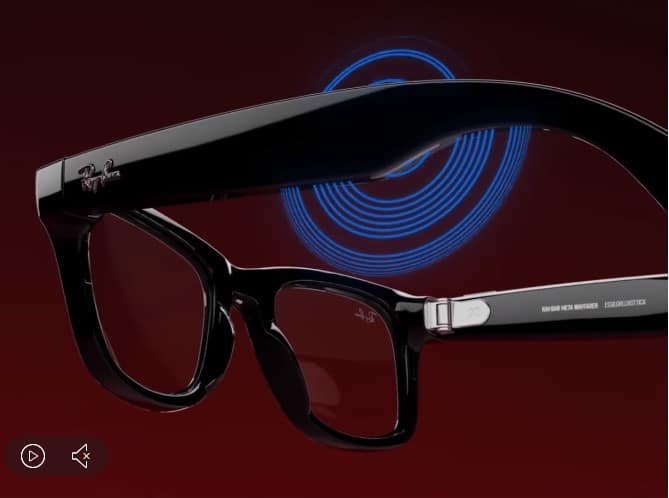The Consumer Electronic Show (CES) is the biggest tech event in the world. It’s the proving ground for breakthrough technologies and a showcase for innovators worldwide. Fuel Medical’s Stuart Lyon, Director of Brand Development, and Dan Quall, Director of Strategic Initiatives, have gone to CES for the past seven years to get a sense of how healthcare technology is changing. If you couldn’t attend CES, have no fear. Stuart and Dan sat down to discuss what’s here and what’s to come. This Ask Fuel First section revolves around that conversation and answers the following question: What emerging technology trends may impact healthcare and, more specifically, the audiology industry?
One of the few things you can get almost everyone to agree on is that change is the only constant. That seems especially true when you look at healthcare technology. For those of us in the hearing health business, that change often takes the form of new hearing devices with advanced technology. By keeping tabs on changing technology and other innovations that disrupt the audiology industry, we can stay flexible with the immediate changes that affect our business.
Stuart and Dan’s adventure with CES began in 2017, so they’ve seen how technology has changed over the last seven years. They looked at products aligned with the audiology industry and then considered products that may have an impact on healthcare overall. Here are some of their highlights.
Audiology
The Evolution of Shokz
One company that has grown immensely over the years has been Shokz. Years ago, Shokz had a minimal presence at CES, with a small booth in the back being manned by a few people, but this year, they took up premium real estate and had an army of representatives ready to showcase their products.
In particular, their bone-conduction headphones have evolved. Initially, the open-ear device developed for active people sounded a bit tinny, but now the sound quality has greatly improved. This is one example of how non-prescribed hearing devices can improve people’s lives. Visit Shokz’s website for more information.

An Increase in OTCs
This year, there was a plethora of OTC (over-the-counter) devices at CES. The increase in representation of OTC devices is a result of the FDA’s approval of OTCs as a category since October 2022, but the large number of products could also have been a result of companies bouncing back after the pandemic. Either way, it was evident that 2024 is going to be a year of increasing players entering the OTC market.
AI: The Buzz of CES
There was also a lot of talk about AI at CES this year, with some real applications in the audio space. For example, AI has been instrumental in detecting the difference between speech and noise in real-time, improving hearing aid clarity. Although AI is already being used in many products today, there is also great potential within the ecosystem of AI in developing components for devices in the future, such as in DSP (digital signal processing) and sophisticated chips. Instead of having a chip for processing digital signals and another chip for audibility, we’re now seeing a convergence of the two. This type of chip has total digital signal processing, which results in better sound quality and the ability to enhance speech.
Some companies that are using AI in their products include the following:
- Avatronix is using speech enhancement capabilities.
- Cadence is working with Renasas, a semiconductor manufacturer, to develop chips with advanced audio DSP and neural networking by leveraging LLMs (large language models).
- Absolute Audio Lab’s also has an agreement with Renesas to create high-quality chips with a speech enhancement system that also gives an all-day battery life.

- Knowles has developed a micro balances armature driver, which has a broader band system that is preferred for listening to music.
- Whispp has an app that uses AI to recreate a person’s voice but at an increased volume for those unable to speak at normal levels.
- Auracast is using Bluetooth® to increase the availability of traditional assistive listening systems (ALSs) in a variety of situations.
- EssilorLuxottica’s Nuance Audio has developed smart glasses with open-ear speakers to enhance audio quality, among other features.

Audiology made up a large section of CES, giving Stuart and Dan a glimpse of products that are ready for those with hearing loss to use, but also some that show promise for future products. CES also featured an extensive digital health presence with several products that could change healthcare in general.
Healthcare
Although the technology mentioned so far was within the audiology industry’s sphere, CES had thousands of products for many different applications. Within the healthcare products segment, there were numerous products that couldn’t be ignored for their potential impact on patient care and making the delivery of healthcare more efficient. Here are some of those products.
BeamO
The pandemic highlighted the need for improved telehealth. BeamO was designed so a patient can monitor important metrics about their health and can facilitate a higher quality telehealth appointment by transmitting health information, such as blood oxygen level, temperature and ECG, in real-time. This allows the doctor to provide better diagnoses even though the appointment is virtual.

Prevent Impact Mouth Guard
An innovative device designed to monitor concussions in real time, Prevent Smart Mouthguard has a practical application in sports at all levels. If a player gets hit on any area of their head, it immediately registers with the device and sends the data to a dashboard to see if the player needs to be removed from the game to seek treatment. Teams can also collect and analyze the data to proactively encourage safety.

GyroGlove™
Hand tremors are major barriers to self-care as people with this condition have trouble eating and drinking by themselves, writing or simply picking up things. The GyroGlove™ [add link to text] is an innovative device that promotes stability for people with this condition. A gyroscope on the back of the glove is tuned into the vibrations to counteract them and allow the person to function normally even though they are having a tremor.

‘imass’
In the first part of cataract surgery, an incision must be made on the eye’s lens. ‘imass,’ a revolutionary new instrument, aids doctors’ precision when making that first incision during cataract surgery. By using this tool, doctors have increased accuracy and speed when performing anterior capsulotomy.
ENT Dr. Robot
Getting patients the care they need in areas where there are few medical professionals can be challenging. ENT Dr. Robot is a concept device ultimately aimed at improving healthcare through remote medical assistance. A practice could set up a room in a remote office with this technology, have an assistant prep the patient and then connect with the doctor via the technology. The doctor could then use any one of the optional devices to perform examinations or even some procedures while being physically apart from the patient.
A Drop in the Bucket
With over 2.5 million square feet of exhibits and more than 4,300 exhibitors, the technology highlighted in this article is just a drop in the bucket. Stuart and Dan searched for technology that might impact healthcare in general and audiology more specifically, and they weren’t disappointed. Some devices have now integrated AI-direct applications in ENT and audiology practices today, including sophisticated chips embedded in hearing aids. Other assistive listening devices, such as Shokz and Nuance Audio’s hearing glasses, might be the topic of conversations with patients who don’t have significant hearing loss but have trouble in noisy environments. You should also pay attention to devices that may alter the way healthcare is administered, such as BeamO and even ENT Dr. Robot if it is produced, which may be relevant to your practice in the future. If you’d like more information about CES or the products listed above, feel free to email Stuart at slyon@fuelmedical.com and Dan at dquall@fuelmedical.com.


